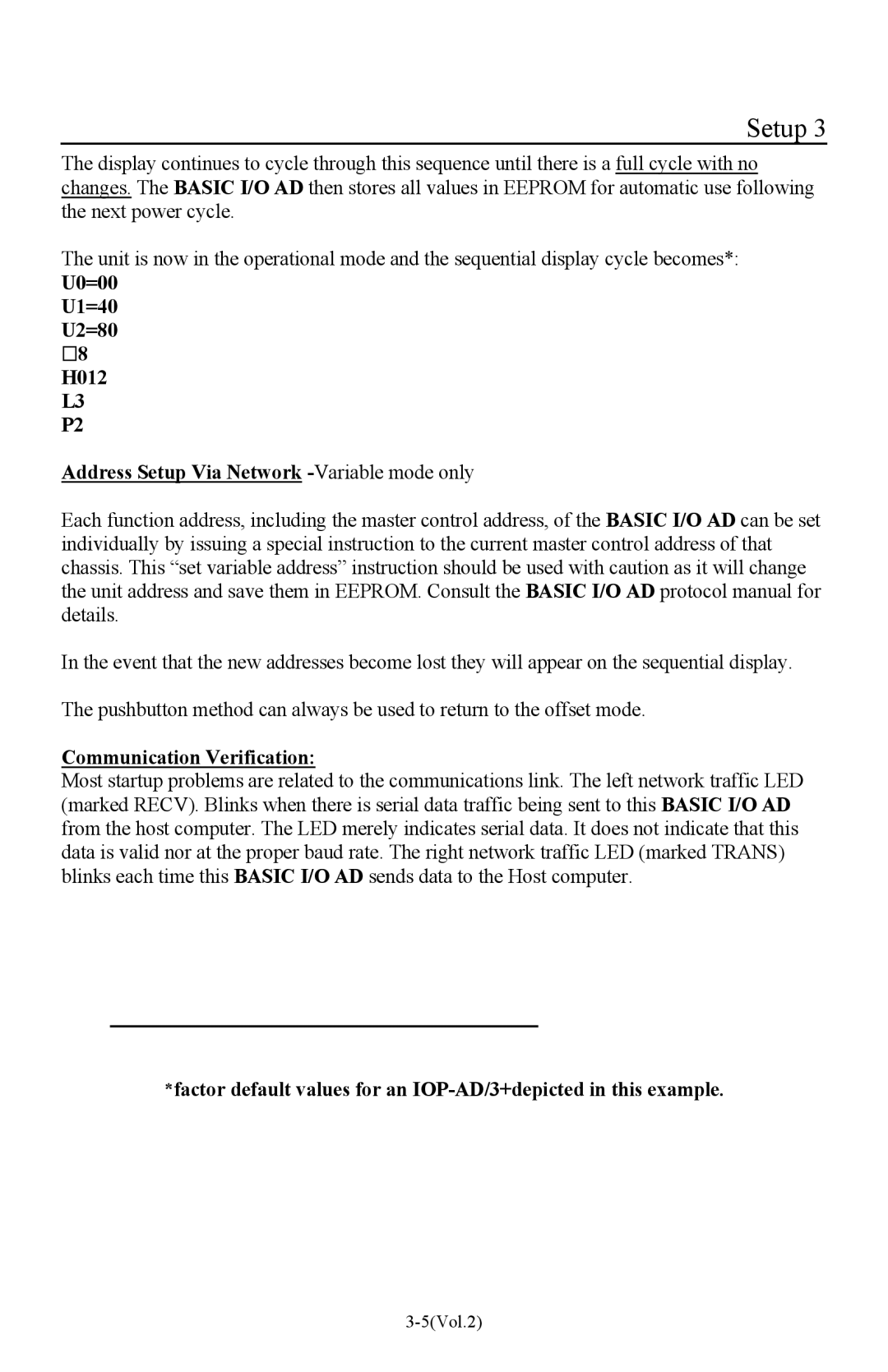
Setup 3
The display continues to cycle through this sequence until there is a full cycle with no changes. The BASIC I/O AD then stores all values in EEPROM for automatic use following the next power cycle.
The unit is now in the operational mode and the sequential display cycle becomes*:
U0=00
U1=40
U2=80
G8
H012
L3
P2
Address Setup Via Network
Each function address, including the master control address, of the BASIC I/O AD can be set individually by issuing a special instruction to the current master control address of that chassis. This “set variable address” instruction should be used with caution as it will change the unit address and save them in EEPROM. Consult the BASIC I/O AD protocol manual for details.
In the event that the new addresses become lost they will appear on the sequential display.
The pushbutton method can always be used to return to the offset mode.
Communication Verification:
Most startup problems are related to the communications link. The left network traffic LED (marked RECV). Blinks when there is serial data traffic being sent to this BASIC I/O AD from the host computer. The LED merely indicates serial data. It does not indicate that this data is valid nor at the proper baud rate. The right network traffic LED (marked TRANS) blinks each time this BASIC I/O AD sends data to the Host computer.
*factor default values for an
